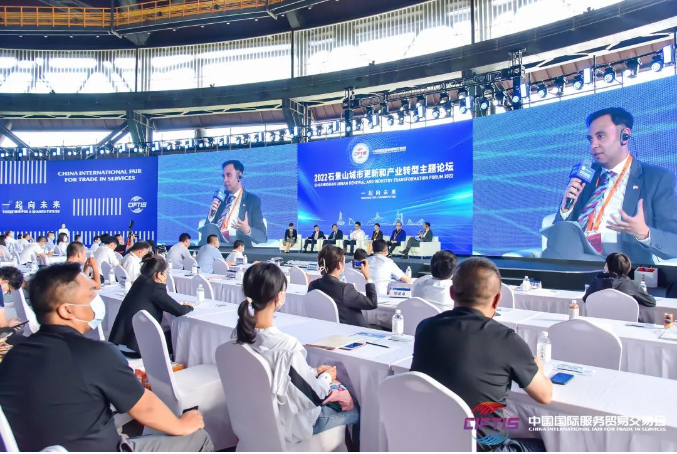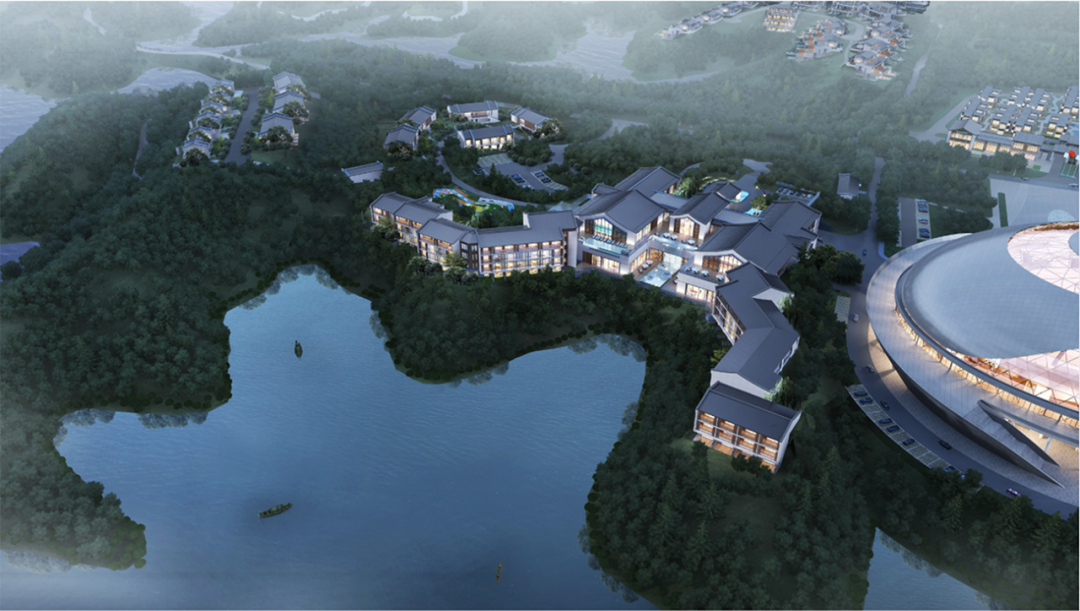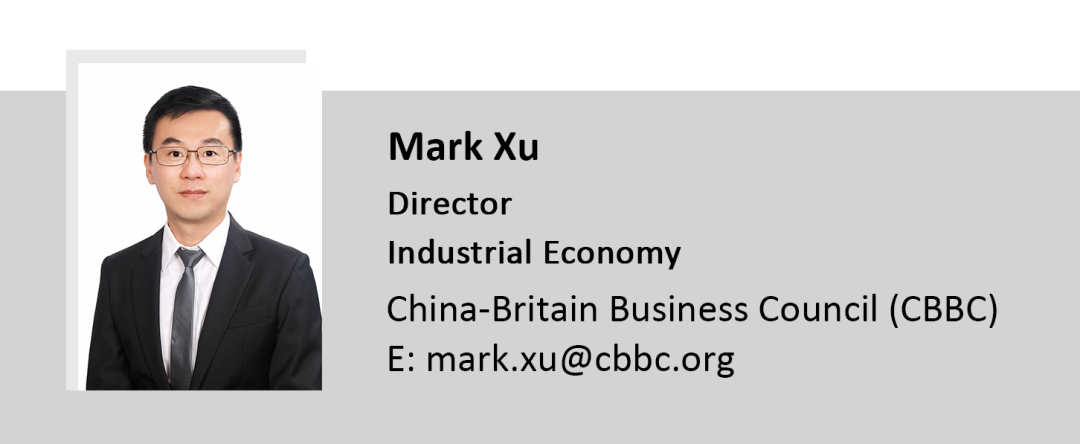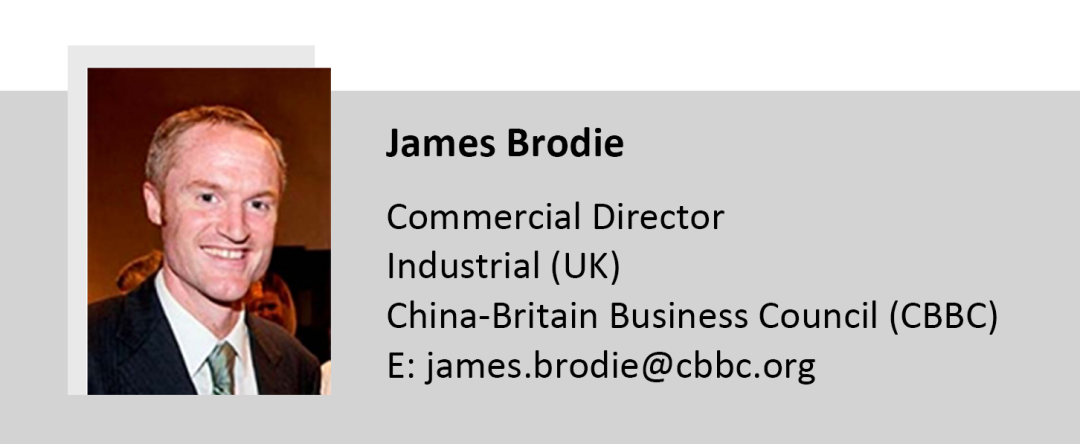
Kiran Patel, Senior Director, CBBC China, shares case studies highlighting UK-China collaboration in urban regeneration and the built environment at CIFTIS 2022.
The UK and China maintain a high degree of complementarity and collaboration within the built environment sector. China’s rapid rise to become a world leader in green energy, the 14th Five Year Plan’s drive for sustained green growth and urbanization, as well as China’s climate change commitments – notably its recent 2060 Net Zero target goal – offer UK companies opportunities within the environmental, infrastructure, and energy sectors. UK companies are highly respected in the Chinese construction sector and offer a wide range of expertise in priority areas, including design and construction of green buildings, urban renewal programmes, green finance, low-carbon design, and eco-city development.
The UK’s strategy for Carbon-Neutrality in the urban environment is focused on:
Industrial Decarbonisation
Construction of greener buildings, including industrial factories, office buildings, and domestic homes; developing advanced R&D in carbon capture, usage, and storage; and an overall net reduction of carbon footprint throughout the ecosystem.
Renewable Energy
Adopting cleaner nuclear energy and pursuing advances in materials for power generation.
Clean Transportation
Accelerating the transition towards zero-emission vehicles, low carbon charging infrastructure, R&D in clean Hydrogen fuel cell technologies and alternative biofuels.
CBBC together with the UK’s energy, environment and infrastructure sector, which includes Aedas, Arup, Atkins, BRE, Foster + Partners, Savills, Mott MacDonald, RIBA, Wood, Zaha Hadid and ZEDfactory - are champions of sustainable collaboration in this area.
CBBC’s partnerships and programmes with national and regional government, free trade zones, business parks, new cities, and technological development clusters continue to offer opportunities for UK companies to plug into key projects and share their experience and track record in regenerating and shaping urban landscapes.
Several key Chinese landmarks and infrastructure projects carry the hallmark of UK excellence in design and construction whether you are admiring the Guangzhou Tower or travelling through either of Beijing’s international airports.
The following are examples of industrial collaboration across the built environment in action.
Supporting Sustainable Development throughout China’s Economic, Technological Development Zones
China continues to accelerate the development of forward-thinking policies across the business environment to attract businesses that deploy green and zero-carbon methods. This is not only applicable to inward investment targets for zones but also draws in expertise from the UK to ensure the development of low carbon and green solutions at their heart of their concept.
ZEDfactory has at project design phase provided zero carbon and green architectural and product design solutions to a growing portfolio of clients in China – including the Datong Industrial Park, the Qinglingtan Industrial Park, and the Jingdezhen Wen Tao Cultural Exchange Centre, conceptualising solutions that ensure the workspaces and surrounding areas are cool and well air-conditioned during the hot summer months.
This has included orienting buildings in a way to reduce direct exposure from the sun and installation of photovoltaic hoods and roofs to help with ventilation. Other proposed solutions have included building parking lots designed to be inclusive for photovoltaic vehicles and bicycles, using breathable insulation on the walls, installing low-speed cooling fans, and integrating a smart natural ventilation system, A++ rated equipment, and LED lighting.
Innovations in Green Leisure & Lifestyle
BREEAM is the world’s foremost and most widely applied environmental assessment method and rating system for buildings, with close to 600,000 buildings certified with BREEAM assessment ratings and over 2,310,000 registered for assessment since it was first launched by BRE in 1990.
As a globally recognised third-party certification, BREEAM not only encourages and supports the sustainable improvement of buildings, but also helps investors understand their asset conditions and improve the resilience of assets in a more efficient way. At present, BREEAM certification has been applied to thousands of assets in several countries to benchmark, improve and certify its performance, and to demonstrate to the public the high standard of environmental and social governance of its enterprises. In China, high profile projects have included Club Med Joyview Qiandao Lake Resort and Ikea’s Jing’an Store.
IKEA also decided to use the BREEAM sustainable building certification to advance the company’s efforts in championing sustainability, setting the following goals for the construction of their Jing’an Store to meet the BREEAM standard.

Club Med Joyview Hotel
By adopting BREEAM at the heart of its construction, the Club Med Joyview Qiandao Lake Resort has maximized the preservation of the site’s ecological characteristics while maintaining synergy between nature, architecture, and people.
Impact through Education & Qualifications
China has both a rich talent pool of architects and the Royal Institute of British Architects and the Chartered Institute of Building ensure that they have access to world class professional development from the UK and enhanced career opportunities.
RIBA recently launched its International Talents Hub and is pursuing a comprehensive international strategic cooperation with the Lin-Gang Special New Area in Shanghai: enriching partnerships that they have been developing across China; opening access to opportunities for aspiring architects; and aligning with China’s infrastructure and regional development policy goals.
Furthering Our Partnership
These examples highlight the UK’s track record as China’s long-term partner and highlight why our respective countries should continue to collaborate on regenerating urban landscapes; enhancing low carbon construction in the built environment; advancing green manufacturing; adopting renewable energy and enabling access to first-class professional qualifications.
For further case studies and insights, please visit the links to access ‘In The Zone’ and ‘Targeting Net Zero’. These two reports present the role of UK-China business working in tandem to complement each other’s competitive advantages.
Whether you are a British or Chinese company working in the built environment sector, or an ETDZ seeking further collaboration with the UK, please contact our Industrial Economy sector leads Mark Xu (China) and James Brodie (UK) .






